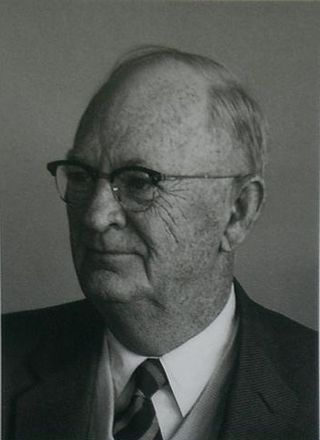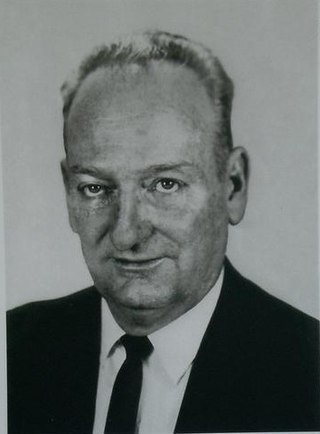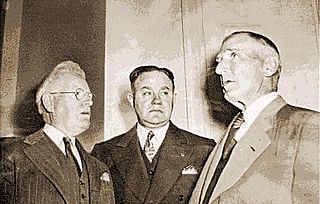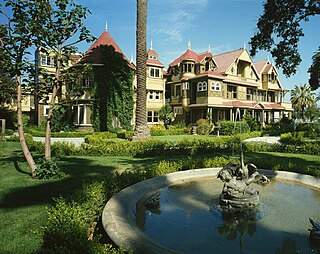
Alcatraz Island is a small island 1.25 miles (2.01 km) offshore from San Francisco, California, United States. The island was developed in the mid-19th century with facilities for a lighthouse, a military fortification, and a military prison. In 1934, the island was converted into a federal prison, Alcatraz Federal Penitentiary. The strong currents around the island and cold water temperatures made escape nearly impossible, and the prison became one of the most notorious in American history. The prison closed in 1963, and the island is now a major tourist attraction.

Robert Franklin Stroud, known as the "Birdman of Alcatraz", was a convicted murderer, American federal prisoner and author who has been cited as one of the most notorious criminals in the United States. During his time at Leavenworth Penitentiary, he reared and sold birds and became a respected ornithologist. From 1942 to 1959, he was incarcerated at Alcatraz, where regulations did not allow him to keep birds. Stroud was never released from the federal prison system; he was imprisoned from 1909 to his death in 1963.

James Aloysius Johnston was an American politician and prison warden who served as the first and longest-serving warden of Alcatraz Federal Penitentiary, serving from 1934 to 1948. He had earlier served as wardens of California state prisons at Folsom (1912-1913) and San Quentin (1914-1924).

Henri Theodore Young was an American convicted bank robber and murderer who, while serving one of a series of prison terms, attempted a 1939 escape from Alcatraz Federal Penitentiary with four other inmates. Arthur "Doc" Barker, Dale Stamphill, Rufus McCain and William "Ty" Martin. During the escape attempt two inmates were shot, Stamphill and Barker. Barker died of his wounds. All survivors were quickly recaptured. Two of the men, Young and Rufus McCain, were sentenced to solitary confinement and served the terms at Alcatraz for a period of three years. Eleven days after re-entering the Alcatraz general prison population in 1942, Young murdered fellow escapee McCain.

Arthur Raymond "Doc" Barker was an American criminal, the son of Ma Barker and a member of the Barker-Karpis gang, founded by his brother Fred Barker and Alvin Karpis. Barker was typically called on for violent action, while Fred and Karpis planned the gang's crimes. He was arrested and convicted of kidnapping in 1935. Sent to Alcatraz Federal Penitentiary in 1936, he was killed three years later while attempting to escape.

The McNeil Island Corrections Center (MICC) was a prison in the northwest United States, operated by the Washington State Department of Corrections. It was on McNeil Island in Puget Sound in unincorporated Pierce County, near Steilacoom, Washington.

Alcatraz Dining Hall, often referred to as the Mess Hall, is the dining hall of Alcatraz Federal Penitentiary where the prisoners and staff ate their meals. It is a long wing on the west end of the Main Cellhouse of Alcatraz, situated in the center of the island. It is connected to the block by a corridor known as "Times Square", as it passes beneath a large clock approaching the entrance way to the dining hall. This wing includes the dining hall and the kitchen beyond it.

Alcatraz Library was a library for inmates at Alcatraz Federal Penitentiary. It was located at the end of D-Block. On entering Alcatraz, every inmate received a library card and a catalog of books found in the library. An inmate would order a book by putting a slip with their card in a box at the entrance to the dining hall before breakfast, and a librarian took the order to and from their cell. The library, which used a closed-stack paging system, had a collection of 10,000 to 15,000 books, mainly left over from Alcatraz's army days.

The Social Hall, also known as the Officers' Club, was a social club located on the northwestern side of the island of Alcatraz, off the coast of San Francisco, USA. Located in close proximity to the Power House, water tower and Former Military Chapel, it formerly housed the post exchange. The club was a social venue for the Federal Penitentiary workers and their families on the island to unwind after a hard week's work dealing with America's most hardened criminals after they'd been locked up at 17:30. It was burned down by a fire of disputed origins during the Occupation of Alcatraz in 1970; leaving a shell which still remains.

United States Penitentiary, Alcatraz Island, also known simply as Alcatraz or The Rock, was a maximum security federal prison on Alcatraz Island, 1.25 miles (2.01 km) off the coast of San Francisco, California, United States. The site of a fort since the 1850s, the main prison building was built in 1910–12 as a U.S. Army military prison.

Alcatraz Hospital is a defunct hospital which was located on Alcatraz Island, California, US. It began operations in the 19th century while the United States Army operated Fort Alcatraz and continued to provide services after the transition to the Alcatraz Federal Penitentiary. Though Alcatraz is now part of the Golden Gate National Recreation Area, the hospital is not included on the general tour.

Edwin Burnham Swope, nicknamed "Cowboy", was the second warden of Alcatraz Federal Penitentiary, which was situated on Alcatraz Island, California, US. He was a native of New Mexico, having been born at Santa Fe in 1888. His earlier posts as warden included New Mexico State Prison, Washington State's McNeil Island Federal Penitentiary, and the Federal Penitentiary at Terre Haute, Indiana.

Paul Joseph Madigan was the third warden of Alcatraz Federal Penitentiary, which was situated on Alcatraz Island, California, US. He was born in Maple Lake, Minnesota in 1897. Madigan served as the warden of Alcatraz from 1955 to 1961. He had earlier served as the last Associate Warden during the term of James A. Johnston, the first Warden of Alcatraz.

Olin Guy Blackwell was an American lawman who was the fourth and final warden of Alcatraz Federal Penitentiary, which was situated on Alcatraz Island, California. Associate Warden to Paul J. Madigan from April 1959, Blackwell served as warden of Alcatraz at its most difficult time from 1961 to 1963, when it was facing closure as a decaying prison and financing problems and at the time of the June 1962 escape. At that time, he was on vacation in Lake Berryessa in Napa County, California, and he didn't believe the men could have survived the waters and make it to shore.

Rufe Persful was an American criminal, convicted of murder, kidnapping and robbery. He was considered one of the most dangerous criminals of his era by the authorities.

Edward Joe Miller,, also known as E. J. Miller, was an American prison administrator. A native of Kansas, he was the second Associate Warden of Alcatraz Federal Penitentiary under James A. Johnston in the late 1930s and 1940s. Both men were known for their strict discipline.

Burton Earnest "Whitey" Phillips was an American criminal, convicted of bank robbery and kidnapping, a federal crime. He was subsequently sentenced to life in prison, and served time in Leavenworth and Alcatraz penitentiaries. He was released on parole in 1952.

There are many reportedly haunted locations in San Francisco, California. According to ghost hunters, over 100 sites in the San Francisco Bay Area are reported to be haunted.
The following events occurred in November 1937:



















